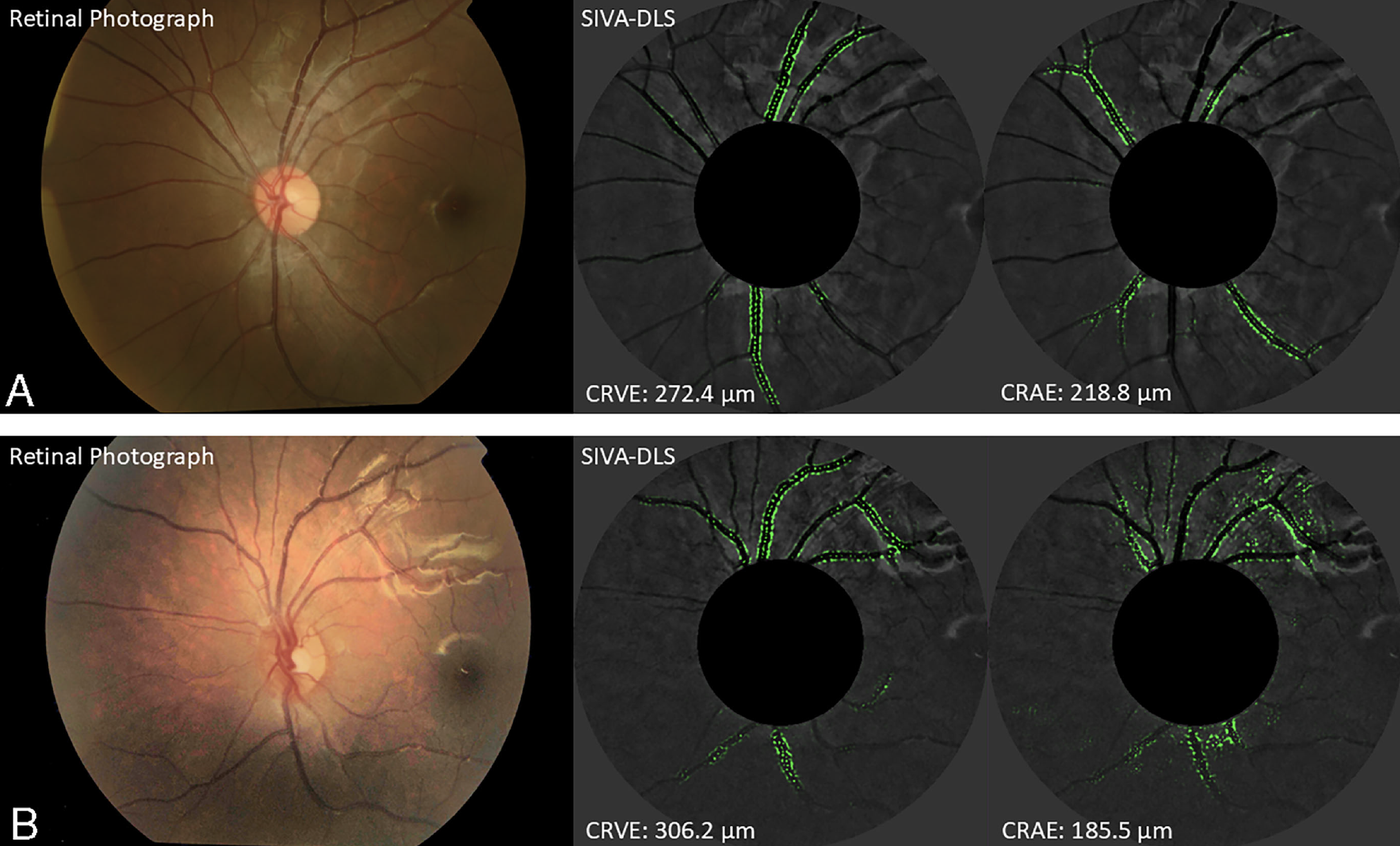 |
| One potential mechanism for the link between healthier microvasculature and activity is due to exercise increasing blood flow and shear stress, which stimulates nitric oxide release and can contribute to protection against cardiovascular disease. These images from the study show venular and arteriolar estimations from children who are more physically active (a) and less physically active (b). Photo: Zhang XJ, et al. Invest Ophthalmol Vis Sci. 2024;65(14):7. Click image to enlarge. |
It is important that kids maintain a level of physical activity, as it improves cardiovascular health, which can be carried into adulthood. Inactivity, conversely, can lead to a child becoming overweight or obese, both of which are linked to cardiovascular disease. What’s more, obese kids are five times more likely to also be obese as adults, increasing risk for cardiovascular complications. Researchers from China studied the effects of physical activity vs. inactivity on the microvasculature in children to glean just how pertinent its effects are at a younger age. Their paper on the work was recently published Investigative Ophthalmology & Visual Science.
All 11,959 participants were taken from the Hong Kong Children Study, which is a population-based and cross-sectional study of kids aged six to eight. All received a comprehensive ophthalmic exam and retinal photography, with demographics and record of physical activity and inactivity taken from validated questionnaires. The retinal photos were used to determine measures known as central retinal arteriolar equivalent (CRAE) and central retinal venular equivalent (CRVE), which estimate the widths of retinal arteries and veins, respectively.
Of all participants, 52.2% were boys and the average age was 7.6 years old. An increased ratio of physical activity to inactivity was associated with wider CRAE (β=1.03) and narrower CRVE (β=-2.08). Upon subgroup analysis, boys with an increased ratio of activity vs. nonactivity also had wider CRAE (β=1.36) and narrower CRVE (β=-2.56). For the subgroup analysis of girls, increased ratio of activity to nonactivity was only associated with narrower CRVE (β=-1.76) and not wider CRAE.
Since retinal photography is noninvasive and relatively accessible, it has been frequently used to investigate cardiovascular disease monitoring, screening and prevention in adults. This has yielded findings that adults with narrower arterioles are more at risk of hypertension, incident stroke, coronary heart disease and cardiovascular mortality. Changes in retinal vasculature should have important clinical implications in children, too, since these changes can be tracked to long-term end-organ damage and mortality via cardiovascular disease.
Changes incited in microvasculature by inactivity in kids may be reversed with treatment, suggesting retinal vasculature can be used to monitor disease and treatment response. As well, these changes may occur early in cardiovascular and metabolic disease development, thus the vasculature being used to predict risk. The study authors note in their discussion that CRAE and CRVE changes could be incorporated into existing prediction scores or used separately to predict cardiovascular disease. Thus, a similar prediction score may be implemented for kids, too.
The authors also note that many techniques have already been applied to investigate the microvasculature, as the microvasculature shares similar anatomic and physiological characteristics with systemic circulation. Thus, previous studies have suggested microvasculature may be a potential marker of systemic vascular health and can implicate cardiovascular, respiratory, renovascular and neurovascular diseases.
Related to this, they believe that “our study contributes to the growing evidence that physical activity positively influences vascular health from a young age. Therefore, this study also underscores the potential of using the retinal vasculature as a biomarker of cardiovascular health.”
| Click here for journal source. |
Zhang XJ, Yuen VL, Zhang Y, et al. Effects of physical activity and inactivity in microvasculature in children: the Hong Kong Children Eye Study. Invest Ophthalmol Vis Sci. 2024;65(14):7. |



